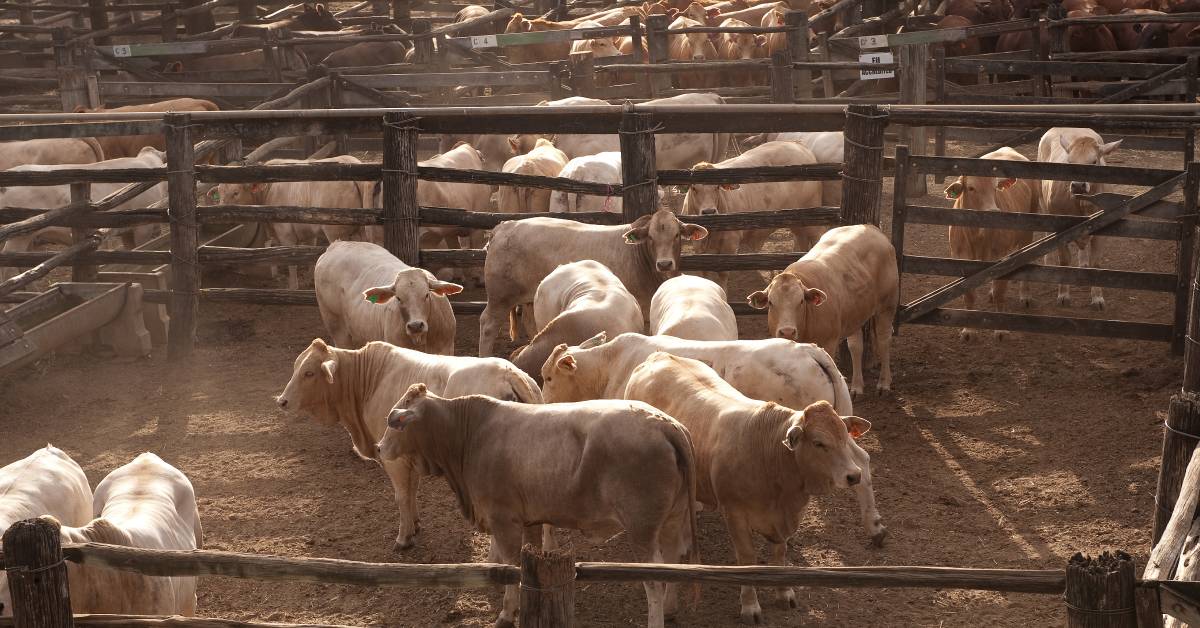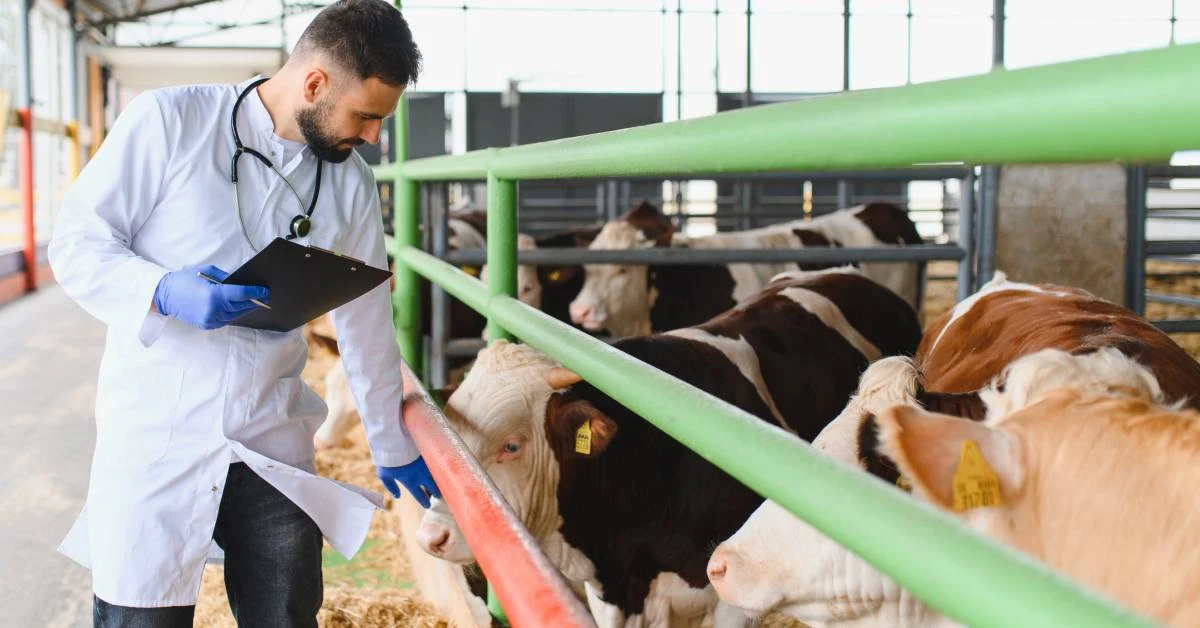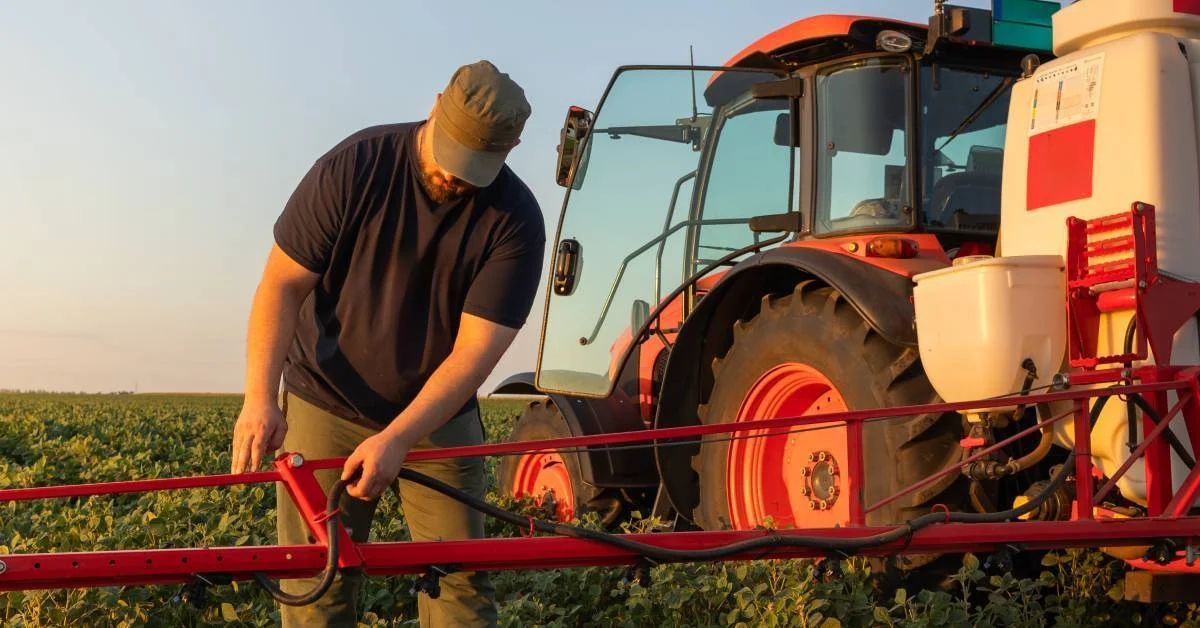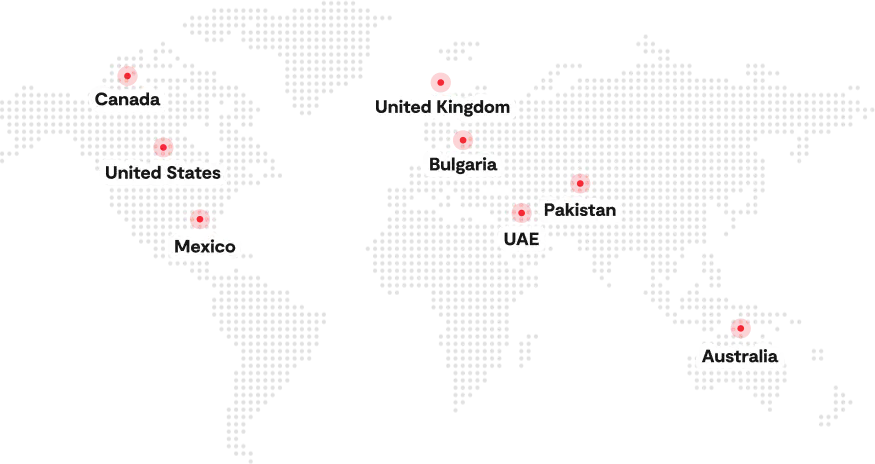Dust control in open feedlots isn’t just about visibility, but it’s also about protecting your investment. Dust in feedlots is detrimental to optimal cattle performance, with bovine respiratory disease (BRD) and acute interstitial pneumonia (AIP) representing up to 68% of feedlot deaths. BRD accounts for 65-80% of the morbidity (sickness) and 45-75% of the mortality (deaths) in some feedlots, making feedlot control one of the most critical health interventions available to feedlot operators, according to research.
Modern technology has transformed how beef feedlot operators approach dust suppression. Gone are the days of manual sprinkler activation and guesswork-based watering schedules. Today’s feedlot dust control systems use automated sprinklers, IoT sensors, and data analytics to maintain optimal conditions while minimizing water usage and operational costs.
The stakes couldn’t be higher. With IoT devices integrated into feedlot management software, operators can track real-time health, monitor weight, and control environmental conditions in a feedlot. Those who fail to adopt these technologies risk falling behind in both animal welfare standards and profitability.
This comprehensive guide explores how modern feedlot dust control technology can address the persistent challenge of particulate matter in open feedlots while meeting increasingly strict environmental regulations.
The Impact of Dust in Open Feedlots
Dust may seem like a minor problem, but in open feedlots, it poses serious threats to animal health, worker safety, environmental compliance, and feedlot efficiency. Understanding the full impact of dust is essential for feedlot operators seeking to mitigate risks, improve productivity, and comply with regulatory standards.
Health Risks to Livestock and Workers Due to Dust Exposure
Dust in feedlots creates a cascade of health problems that directly impact your bottom line. Cattle exposed to excessive dust experience reduced feed intake, compromised respiratory function, and slower growth rates. The particulate matter acts as an irritant, causing cattle to spend more time seeking shelter and less time eating, which translates to decreased average daily gain.
Dust-generating activity can be minimized by alternating the feeding schedule to encourage cattle to ruminate during this time. A study by Mitloehner et al. reported that 20% of cattle fed later in the day exhibited dust-generating behavior compared to 69% of animals fed during conventional times. This behavioral modification approach, while helpful, only addresses part of the problem.
For workers, prolonged exposure to feedlot dust creates serious occupational health risks. Respiratory diseases, including chronic obstructive pulmonary disease and occupational asthma, are common among feedlot employees. The delicate particulate matter contains organic compounds, bacteria, and endotoxins that can trigger inflammatory responses in both humans and animals.
Uncontrolled Dust Leads to Environmental Damage and Compliance Issues
The environmental implications of uncontrolled dust extend far beyond the feedlot boundaries. Research on emissions from large open-lot beef cattle feedlots reveals that these feedlots generate substantial amounts of total suspended particulates (TSP) and particulate matter across multiple size ranges, including PM10 and PM2.5. Studies using flux-gradient techniques have found that a large fraction of particulate matter emitted from feedlots is in the coarse range of aerodynamic diameter, greater than 10 μm.
Regulatory agencies increasingly scrutinize agricultural operations for air quality compliance. The Environmental Protection Agency has established National Ambient Air Quality Standards for PM2.5 and PM10 under the Clean Air Act, which requires the EPA to set national ambient air quality standards for six pollutants considered harmful to public health and the environment.
The Clean Air Act requires the EPA to set two types of NAAQS:
- Health-based standards (primary standards)
- Standards to protect public welfare (secondary standards).
Operations that contribute to ambient air quality violations can face enforcement actions and operational restrictions. Beyond regulatory compliance, feedlot dust control plays a crucial role in community relations. Feedlots that fail to manage dust effectively face increased scrutiny from neighboring communities and environmental groups, which could lead to operational restrictions or costly legal challenges.
Traditional Methods to Control Dust in Open Feedlots
Before the rise of automated solutions, most feedlot operators relied on manual dust control methods, such as watering and mechanical systems. While these traditional techniques can offer short-term relief, they often fall short in efficiency, consistency, and long-term sustainability, especially in large-scale or drought-prone operations.
Watering Systems
Application of water to the feedlot surface is the most common and effective method for controlling feedlot dust. This method should begin well in advance of dust becoming a problem. Traditional watering systems typically involve manual activation of sprinklers or irrigation equipment, often based on visual assessment of dust conditions.
The effectiveness of water-based feedlot dust control depends heavily on timing and application rates. Too little water provides inadequate dust suppression, while excessive watering creates mud, increases the moisture content of manure, and can lead to runoff issues. Traditional systems often lack the precision needed to optimize water usage while maintaining effective dust control.
Water costs and availability present significant challenges for many feedlot operations. In drought-prone regions, water restrictions can limit feedlot dust control options, forcing operators to seek alternative solutions or risk non-compliance with air quality standards.
Mechanical Systems
Mechanical dust suppression systems include fans, misting equipment, and specialized vacuum systems designed to capture airborne particles. These systems work by either increasing air circulation to disperse dust or directly capturing particles before they become airborne.
However, mechanical systems face significant limitations in open feedlot environments. High maintenance requirements, vulnerability to weather conditions, and limited coverage areas make them less practical for large-scale operations. Energy costs for continuous operation can also be substantial, particularly for high-capacity fan systems.
Most mechanical feedlot dust control systems require frequent cleaning and component replacement due to the harsh conditions in feedlot environments. This ongoing maintenance burden often makes them less attractive compared to water-based alternatives.
Modern Technological Solutions to Control Dust in Open Feedlots
With rising regulatory pressure and the increasing need to improve cattle health and operational efficiency, feedlot operators are turning to advanced technologies for more reliable feedlot dust control. Modern solutions, such as automated sprinkler systems, targeted misting, and IoT-based monitoring, offer a smarter, data-driven approach that minimizes water waste, reduces labor, and delivers measurable results in real-time.

Automating Sprinkler Systems to Deliver Timely and Precise Dust Control
Modern automated sprinkler systems represent a significant advancement over traditional manual activation methods. These systems use programmable controllers and environmental sensors to determine optimal watering schedules based on weather conditions, wind speed, and humidity levels.
The technology behind automated sprinklers includes pressure sensors, flow meters, and timer-based controls that ensure consistent water distribution across the feedlot surface. Advanced systems can adjust application rates in real-time based on changing conditions, maximizing dust suppression effectiveness while minimizing water waste.
Benefits of automated sprinkler systems extend beyond dust control. Consistent application schedules reduce labor costs, improve water use efficiency, and provide better documentation for regulatory compliance. The precision of automated systems also reduces the risk of overwatering, which can create mud and increase the moisture content of manure.
Targeting High-Traffic Areas with Cow Sprinklers and Misting Technology
Cow sprinklers target specific areas where cattle congregate, such as feed bunks, water troughs, and shade structures. These systems focus water application on high-traffic areas where dust generation is most problematic, providing targeted relief for both cattle and feedlot dust control.
Misting systems work by creating fine water droplets that bind with airborne dust particles, causing them to settle rather than remain suspended in the air. The effectiveness of misting systems depends on selecting the proper nozzle, maintaining adequate water pressure, and strategically placing them throughout the feedlot.
Modern cow sprinkler systems often include programmable zones that can be activated independently based on cattle behavior patterns and environmental conditions. This targeted approach reduces overall water usage while maintaining effective dust control in critical areas.
Using IoT Sensors for Real-Time and Predictive Feedlot Dust Control
The mining industry confronts significant challenges in mitigating airborne particulate matter (PM) pollution, necessitating innovative approaches for effective monitoring and prediction.
This research focuses on the design and development of an Internet of Things (IoT)-based real-time monitoring system tailored for PM pollutants in surface mines, specifically PM 1.0, PM 2.5, PM 4.0, and PM 10.0. Similar technology is now being adapted for feedlot applications.
IoT sensors continuously monitor environmental conditions, including temperature, wind speed, humidity, and particulate matter levels. This real-time data allows feedlot dust control systems to respond immediately to changing conditions, activating sprinklers or adjusting application rates before dust becomes a problem.
The integration of weather forecasting data with IoT sensors enables predictive dust control, allowing systems to prepare for conditions that typically generate high dust levels. This proactive approach is more effective than reactive systems that only respond after dust becomes visible.
How Folio3 Agtech Feedlot Management Software Supports Dust Control?
Folio3 AgTech feedlot management software plays a critical role in supporting dust mitigation strategies through real-time monitoring, automated scheduling, and data-driven decision-making. The benefits of feedlot software enable operators to improve their operations, reduce waste, and maintain compliance, while also enhancing animal welfare and operational efficiency.
1. Integrating Technology for Real-Time Monitoring
The software connects with dust control systems, such as sprinklers, weather stations, and sensors, to track feedlot conditions. Real-time dashboards offer visibility into dust levels, water use, and system performance. Operators can remotely monitor operations, respond instantly to changes, and optimize environmental and animal health factors for more effective feedlot dust control.
2. Smart Scheduling
The feedyard maintenance module helps you automate dust control schedules by analyzing historical data, cattle density, and weather forecasts to optimize operations. It determines the best times to activate sprinklers, reducing unnecessary water use while maximizing dust suppression. This automation eliminates manual guesswork and ensures consistent dust control, regardless of seasonal or daily fluctuations in feedlot activity.
3. Zone-Based Control
With zone-based scheduling, the software enables the independent management of different areas within the feedlot. High-traffic or dusty zones receive more frequent watering, while less active areas are watered less frequently. This targeted approach enhances water efficiency, prevents overwatering, and ensures dust control is based on real-time needs.
4. Real-Time Dashboards & Data Analytics
Live dashboards give a snapshot of dust levels, equipment status, and performance metrics. Advanced business analytics identify trends, inefficiencies, and areas for improvement in your dust control operations. By continuously tracking water usage and system uptime, operators can refine their strategies for improved outcomes and lower operational costs.
5. Track & Report Everything
All dust control activities are logged automatically, enabling accurate and audit-ready reporting. The system generates compliance documentation for regulatory bodies and custom reports based on selected timeframes or conditions. This ensures transparency and simplifies environmental compliance, while also tracking performance for long-term improvement in feedlot dust control.
Conclusion
Effective dust control is no longer just about compliance but a strategic advantage that improves animal health, boosts efficiency, and supports sustainable operations. By combining automated systems, real-time monitoring, and data-driven insights, modern feedlots can proactively manage dust and adapt to evolving regulations.
Folio3 AgTech Feedlot Management Software equips operators with the tools needed to manage dust control, reduce manual workload, and make smarter decisions based on actionable data. So, if you’re looking to modernize your operation and improve long-term performance, now is the time to explore how our solution can help.
FAQs
How Can Automated Sprinklers Help In Controlling Dust In Feedlots?
Automated sprinklers use environmental sensors and programmable controllers to apply water at optimal times and rates, reducing dust more effectively than manual systems while minimizing water waste.
What Role Does IoT Play In Managing Dust In Feedlots?
IoT sensors continuously monitor environmental conditions and dust levels, enabling real-time adjustments to dust control systems and predictive activation based on weather forecasts and changing conditions.
What Are The Cost Benefits Of Using Modern Dust Control Technologies?
Modern manufacturing systems reduce labor costs, optimize water usage, improve cattle health and growth rates, and help avoid regulatory fines, typically paying for themselves within 2-3 years of operation.
How Do Cow Sprinklers Differ From Traditional Dust Control Methods?
Cow sprinklers target specific high-traffic areas where cattle congregate, providing focused dust control and cooling benefits while using less water than broad-area traditional sprinkler systems.







